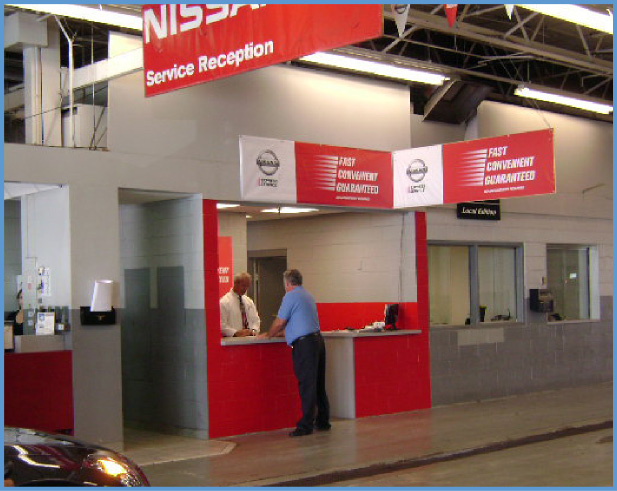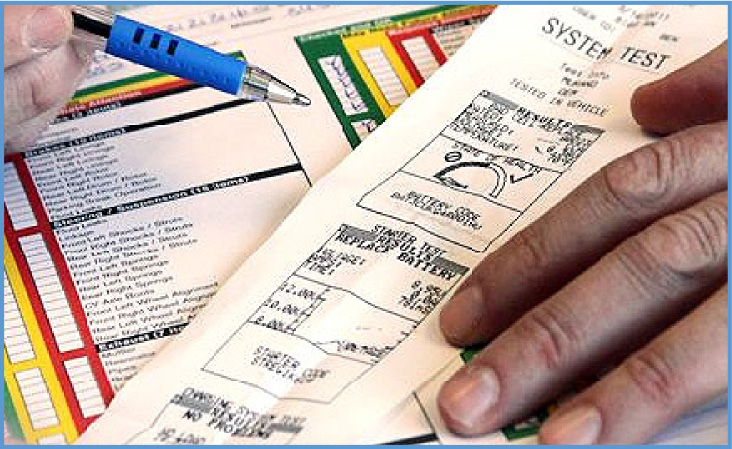![]()
There are many conditions that may cause a vehicle incident that contributes to a customer's perception of its functionality, operation or performance. It's always important to remember, a person's perception of a condition will vary depending on the individual, and each customer will have their own criteria for what constitutes a problem. The Vehicle Repair Process should always begin with validating a customer concern, and doesn't end until necessary repairs have been completed and quality checked before returning the vehicle to the customer.

Fixing a customer's vehicle correctly during their first visit will help improve customer satisfaction with Nissan/Infiniti service. Satisfaction drops if the customer has to return a second time for the same problem. On the third visit, "you guessed it", a customer's satisfaction has nose-dived.
Identify and Validate Customer Concern
It is important that all conditions contributing to a customer's concern be captured and the specifics documented. Ask the customer about his/her concerns carefully. Stating the customer complaint as INOP is never specific. The service advisor/consultant should ask the customer about the incident, or MIL Light, or noises they observed. It is important to understand the phenomenon or status. A good way to systemize all the information prior to the diagnosis is to prepare a question sheet referring to the question points. It is important to understand the incident symptom(s) and status well enough to provide proper note taking and documentation of all the information accurately on the Repair Order.

General Information
Understanding the vehicle's condition before and when an incident occurred (sitting for days, sitting overnight, recently driven, etc.) is helpful. Ask the customer to describe the driving conditions which duplicate their concern such as:
1) Weather- cold, wet, or hot or rapidly changing weather conditions.
2) Road surfaces- city or highway roads, rough surfaces, slick or dry.
3) Time of day- morning, afternoon, evening or night.
4) Vehicle speed- slow driving or at highway speeds, the approximate speed when an incident occurs can often help.
5) Engine hot or cold.
6) Start-up, Short or long drive.
- Perform road test (if possible) to help verify the customer's concern. This is a good way to observe an incident or hear a noise first hand.
- Perform action test and check the system operation after system diagnosis.
In some cases, multiple conditions or symptoms that appear simultaneously may cause a DTC to be detected.
If an abnormal condition is observed:

Document a complete description of the incident with what you've observed and as described by the customer. Using the Diagnostic Worksheets available in ASIST in Virtual Academy will help you in obtaining complete incident description. These Diagnostic Worksheets are available for lead techs and Service advisors to use on the service drive.

Always allow enough time during the write-up process for the customer to demonstrate the concern. Ask the question, "Have you ever had this concern before?" Be aware of how many repairs have been attempted for the stated concern. If this is a repeat repair, document the customer's response on the work order and refer to the "Comeback Action Plan". You or your Service Advisor should have the customer demonstrate the incident (if possible) under the conditions in which it occurs. For example: a seat trim incident may only require a static inspection. A driveability incident would require that the customer road test the vehicle with the Shop Lead or Technician that will be assigned to the vehicle.
Determine the Possible Cause

It is necessary to diagnose the cause and extent of a customers concern before an accurate Repair Order, cost estimate and/or repair process can be determined. Document the possible cause of concern and what repairs may be necessary in a format that is approved by the Service Manager and Nissan/Infiniti. Documentation should include test results, observations, pictures, or any other evidence necessary to support your conclusion. A well-written repair order should list a minimum of five items. The Complaint, Diagnostic Procedures, (inspections and action tests performed), Test Results, Possible Root Cause and the Recommended Correction.

"Fixed-Right-the-First Time"
Quality Control Check and Test Drives
It is critical to the success of the repair process that any incident correction be confirmed before returning the vehicle to the customer. This check should be completed by someone other than the servicing Technician, such as the Shop Foreman, Service Manager, or Service Advisor.

The same duplication steps should be followed as when the original customer concern was validated, e.g., static test, or road test under same conditions as the validation. Confirmation of a complete repair should keep the vehicle from returning to the dealership for multiple repair attempts for the same incident and improve CSI.

Today's design technology and the digital age have brought an explosion in both vehicle complexity and the amount of technical information available. It's not always easy to keep track of what resources are available to you and where to find them — but that knowledge is critical to your service success. To help you along every step of the way, Nissan/Infiniti provides a variety of information and training resources that assist in getting the job done right, the first time.
Regarding customer satisfaction, the customer/client looks to the service department to resolve their concerns whether this is a routine maintenance service or a complex diagnostic procedure.
Treat each and every customer as the most important person to visit your service department today.
